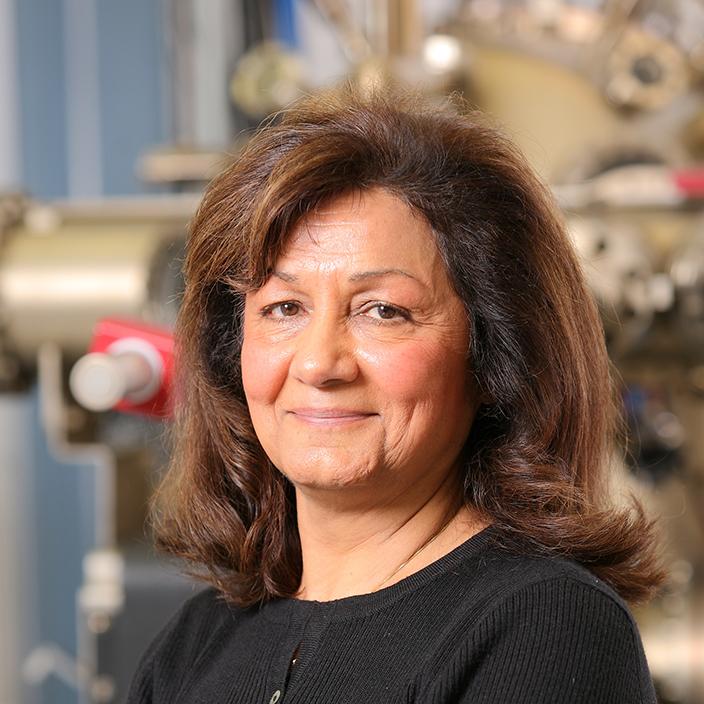
Iranian-born engineer Manijeh Razeghi raised three children while earning a doctorate in nuclear physics. She went on to develop a laser that can detect explosives and pathogens, plus electronic devices that could lead to turbo-charged, superfast wifi.
We have all heard of kilohertz, megahertz, and even gigahertz—terms for various wavelengths of electromagnetic radiation. But there's another frontier beyond the billion-cycle wavelengths of gigahertz: the terahertz (THz) realm, which bridges the spectrum between the highest radio waves (microwaves) and the lowest frequencies of light (infrared). It is an area that has long been a sort of technological no-man's-land, since THz waves are difficult to generate and tend to be weakened by Earth's atmosphere. But Manijeh Razeghi is one engineer who ignored those limitations and sought to overcome them instead.
Born in Iran, Razeghi’s brilliance was clear from a young age. Her innate curiosity and highly-educated and encouraging family led her to pursue her degrees in nuclear physics at Tehran University and then her doctorate at the University of Paris. After strong leadership in the Thomson-CSF Exploratory Materials for Quantum Devices Lab on the development of metalorganic chemical vapor disposition (MOCVD), Razeghi relocated to the United States in 1991, when she became a chair professor at Northwestern University and founded the Center for Quantum Devices there. She went on to found Northwestern's undergraduate and graduate programs in solid-state engineering, all the while conducting her own research in solid-state electronics. Even before coming to Northwestern, she pioneered major new techniques to create semiconductor materials and build optoelectronic devices for lasers, advances that spurred the worldwide adoption of fiber-optic telecommunications. She also began to investigate the development of exotic electronic devices operating across a broad range of frequencies including the terahertz range, which led her to the quantum cascade laser (QCL).
A semiconductor laser first invented in the 1990s, the QCL operates in the infrared to terahertz range. Most functioning QCLs were cumbersome and expensive devices that worked only at super-cold temperatures with low output power, unsuited for general usage. Razeghi built upon her previous achievements in semiconductor development, particularly the use of indium phosphide materials, to improve upon existing QCL designs, achieving a wide range of high-power, room-temperature QCLs and transforming the device from a technological novelty to a practical, commercially-viable product. Using Razeghi's QCL designs, the promise of terahertz technology could be fully realized at last.
Those applications extend over a broad range. Although THz is unsuited for the long-range communications possible with radio and microwaves (except perhaps at high altitudes beyond most of the atmosphere, or in space), it readily lends itself to high data rate transmission over the shorter distances of local networks. But it is in other applications that we can fully exploit the unique characteristics of terahertz waves. As a form of safe, nondamaging radiation that penetrates through solid materials, THz waves can be used in spectroscopic "fingerprinting,” imaging various proteins and pathogens. The same attributes make THz imaging very useful for security and surveillance screening; THz waves can detect concealed weapons and explosives. This application of THz radiation also makes it highly attractive to scientists who can use it for the characterization of various molecules and substances. In manufacturing, it can be applied for quality control inspection and nondestructive testing, and has even been used to study Renaissance artwork, safely peering into the layers of a painting to reveal hidden details. All these uses, and more yet to be developed, have been made possible by Razeghi's development of the room-temperature tunable quantum cascade laser covering a wide spectrum of THz frequencies.
As the author of 18 books and more than a thousand papers, Razeghi also holds numerous patents for inventions based upon her work, and has trained students who will form the next generation of optoelectronics engineers. Her most lasting legacy, however, may ultimately be her role in bringing terahertz technology out of the laboratory to make it a part of our everyday technological landscape.
Information as of March 15, 2018

